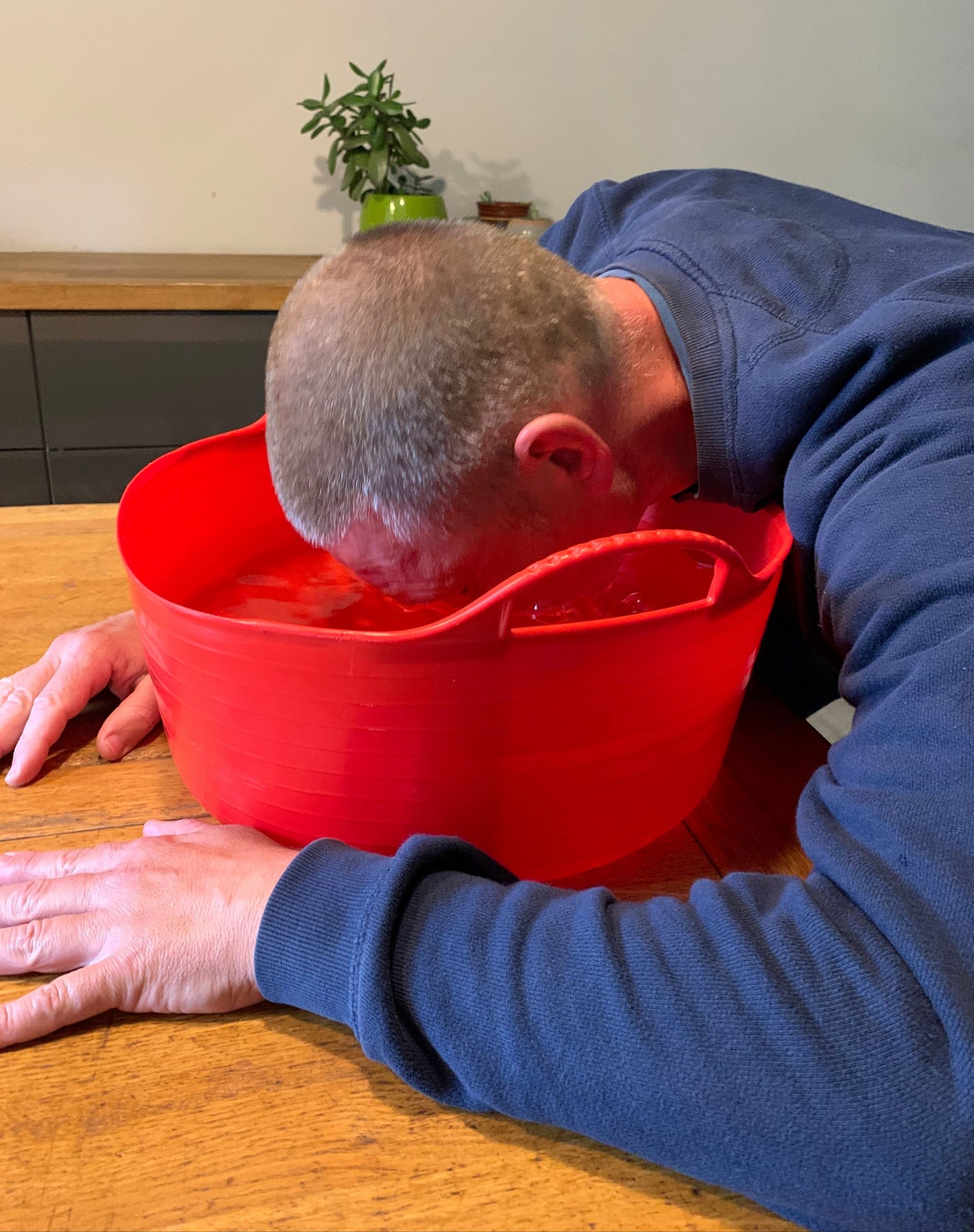We’ve had a few dips in the sea during the last four months without access to the pool. Being in saltwater has many obvious, and celebrated, selling points. But the simplest benefit of swimming, breathing into water, is found most easily in the calm, warm pool, and anyone can enjoy it. Without a pool, is there anything we can do at home?
This morning I decided to experiment with a tub trug full of tap water.
Relax your neck, rest your face in the water and listen to the long steady stream of bubbles as the air passes, through your open mouth, from your lungs into the water. As you repeat the process, your breathing will start to open up and you’ll find yourself staying underwater longer.
If you’re learning to swim and trying this for the first time, it may help to sing into the water.
Even for seasoned swimmers, this can be a useful if not profound experience. But we often deny ourselves the benefits of simply breathing into water when we go swimming because we’re preoccupied with other things we feel we should be doing.
Floating freely in the pool, giving the weight of your head and torso to the water, has a positive influence on your breathing because it opens your back. This gives swimmers a unique sense of being supported. We can’t get that experience out of the pool. But for purposes of experimentation with breathing into water, being restricted to the few inches in the trug matters less than I thought it would. And for non-swimmers, it may be an advantage to practise this important first step in your own environment, with your feet on solid ground.
I wanted to find out from this exercise whether, when I’m missing making bubbles, or when bubbles seem to be missing in the cold sea, there’s any value in breathing into water at home. The answer is yes. It relaxes me, connects me with the water and opens up my breathing.
Try it, if bubbles are missing from your swimming, or you’re missing making bubbles.


